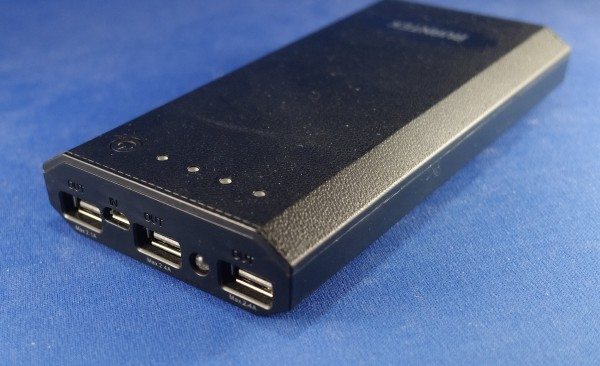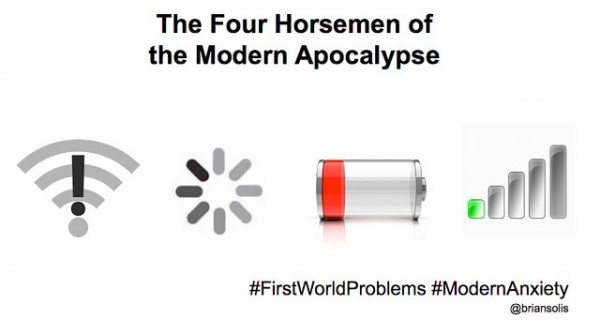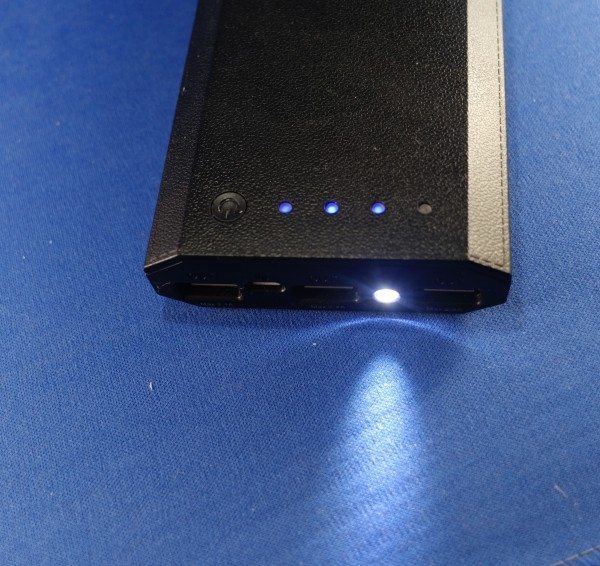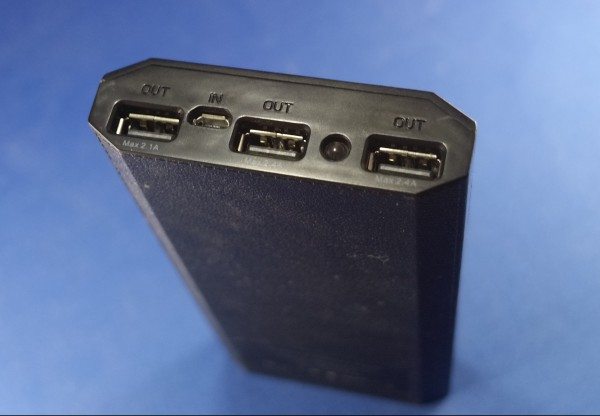I saw the above cartoon on Twitter a month or so back. It shows the symbols all Gadgeteers fear: No wifi, the “waiting” pinwheel from your phone’s weak processor, the flashing red battery icon, and, of course, No Cell Service. While service coverage will vary depending on geography and location, and the processing power of your phone will depend on the manufacturer of the hardware and the ingenuity of the software developer, the battery icon is something each of us can do something about. That’s where Avantek has stepped in with their 20,000 mAh battery pack. I was sent one for testing, and have been putting it through its paces.
Note: Photos may be tapped or clicked for a larger image.

The first thing you’ll notice on picking up the box, is that this thing is heavy! While many of my USB charging batteries weigh in the range of 2-6 ounces, this little puppy tips my kitchen scale at 16.25 ounces! That’s just over a pound. That’s 460 grams, heavier than my iPad Air 2 (.96 lb./438g). But the beauty of this unit is that it can fully recharge that iPad almost two full times. And, while it’s at it, it can also recharge an iPhone, flashlight, or any other USB chargable item. And it’s got a small flashlight embedded in it, to make it easier to find the cable for your device in the bottom of your carry-on during that long flight.
Physically, the power pack is just over 6″ long, and just over 3″ wide. It’s less than an inch thick, and has beveled edges on the 4 long corners, with three standard USB ports and a single microUSB sharing a small side with the LED of the flashlight. All other sides are smooth, slightly textured plastic, with the exception of a button and four charge indicator LEDs on the top above the ports. Holding down the button for a second or two will cause the unit to light up, with the series of LEDs showing the amount of charge. If no load is placed on any of the outputs within 10 seconds or so, the lights go out. A double-click to the same button toggles the little flashlight on and off. This is not a bright light, but in very dark areas, it will serve well to allow the user to see obstacles or items in the bottom of a gear bag.
According to the literature, one should expect 11 charges for an iPhone 5s, 6 times for a Galaxy S5 or iPhone 6 Plus, and twice for all but the most recent tablets (the iPad Air 2 is the only one mentioned.) It’s guaranteed to not degrade in performance for 400 charge/discharge cycles, and the circuitry is designed to maximize power transfer while minimizing heat buildup.
I used it to charge several items at once, I used it to top off items when I biked, and I just left it sit for a while to see if it would hold its charge. I found that no matter what state devices were in, they would get to a full charge within a reasonable time compared to their stock chargers. This included several headphones/earphones, iPhones, iPods touch, iPads (an original mini, as well as my iPad Air 2), and the charger for my Apple watch. Recharging the battery pack was easy, as well, and just took a few hours, depending on the depth of discharge. I never noticed any degradation of the battery even after a week or more of no use.
All in all, even though it’s quite a chunky bit of kit, there are many reasons to have something like this where weight isn’t much of a consideration: car or tent camping, bike trips, horseback rides into back country, etc. I doubt it’ll be in my in-flight bag very often, but it’ll for sure be in my checked luggage when I travel to places where I may not know the power infrastructure beforehand. And it has become one of the things I take to my day-off office (the back deck) when I’m not taking a computer out there. At $80 retail, it’s a decent price if you need that much power, but at the usual online price of about $40-$45, it’s almost a no-brainer for anyone.
Sure, most of us get to a place of civilization at least once a day, where we can charge up things, but I’ve worked jobs where my team was away from everything from breakfast to dinner, and having power for something besides the truck AM radio would have been nice. There are other reasons you may want this extreme amount of power available. Family camping, day-long bike trips, or a long day fishing or boating might take it’s toll on your device’s battery, and having this much power to spare can very well be a life-saver in emergency situations. We’ll not mention the zombie apocolypse.
Source: The sample for this review was provided by Avantek. Please visit their site for more info and Amazon to buy one.
INIU Mini Portable Charger, Small 45W PD Power Bank, 10000mAh USB C in&Out Fast Charging Pocket Size Battery Pack, Travel Essentials Powerbank for iPhone 17 16 15 14 Pro Air, Xiaomi, Samsung S24 etc
32% OffANDERY Car Phone Holder for Magsafe [78+LBS Strongest Suction & 2400gf Magnetic] 360° Adjustable Car Phone Mount, Phone Holders for Your Car for iPhone 17 Pro Max 16 15 14 13 12 Air Plus, Carbon Fiber
40% OffProduct Information
| Price: | $80 retail - $40-45 street |
| Manufacturer: | Avantek |
| Retailer: | Amazon |
| Requirements: |
|
| Pros: |
|
| Cons: |
|






Gadgeteer Comment Policy - Please read before commenting
FAA prohibits rechargable Lithium Ion batteries in checked baggage.